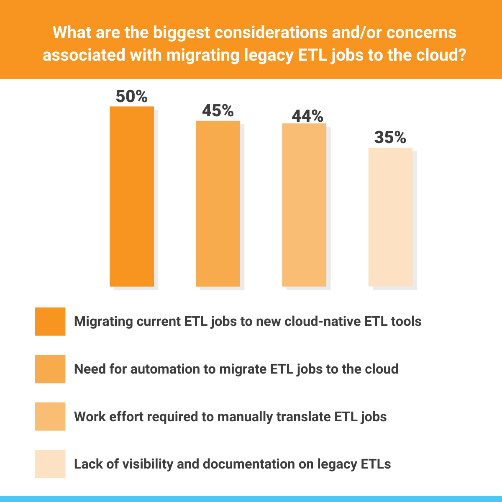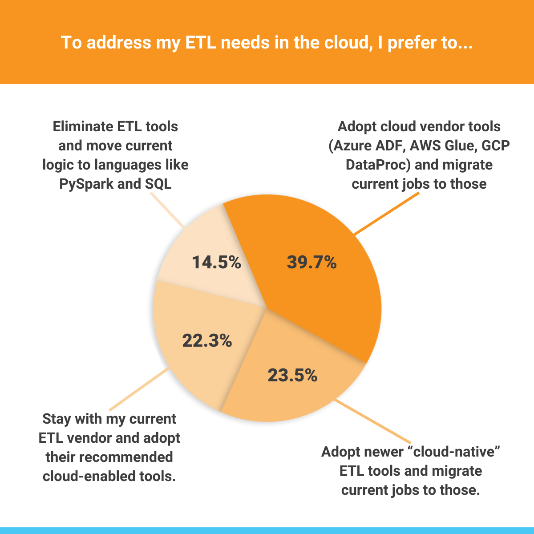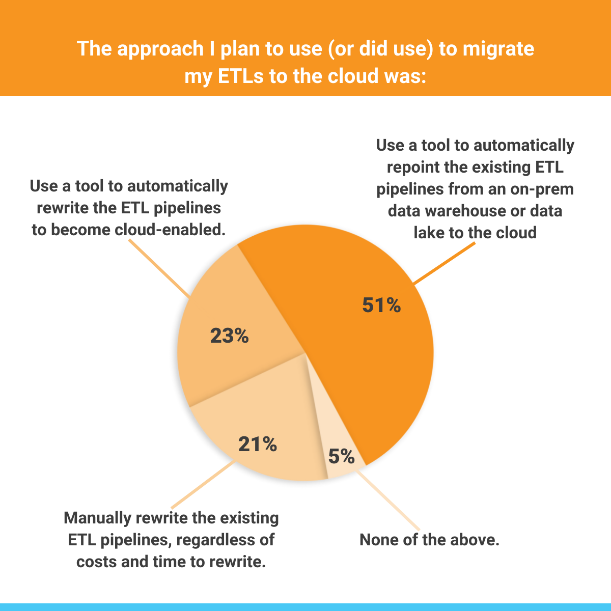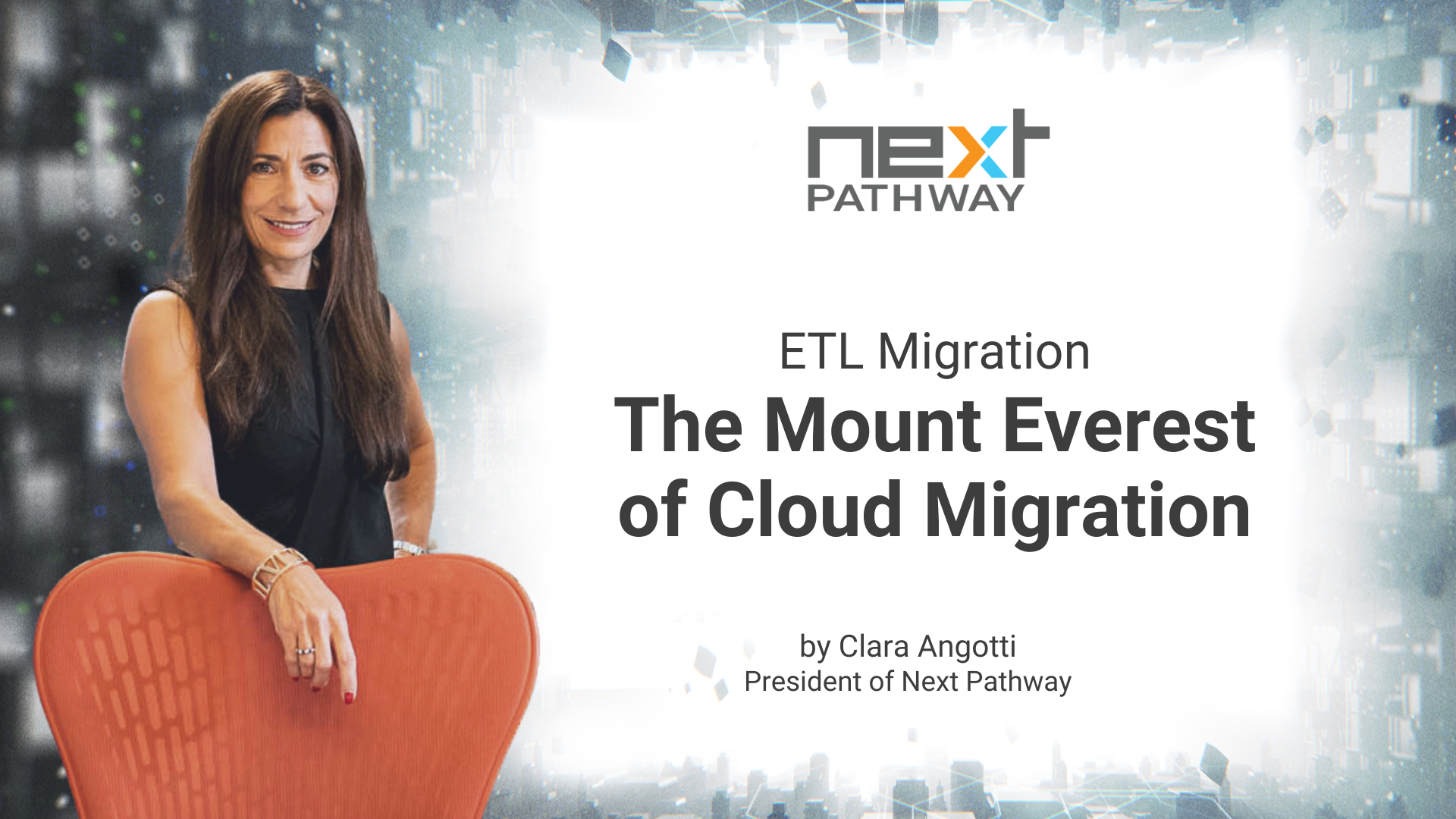Moving massive amounts of data, albeit daunting, can be easily achieved with cloud tools. But IT departments are faced with years of legacy systems that are interconnected with extensive data pipelines. The code and data pipelines must first be translated and then migrated to run in cloud native environments. ETL pipelines present their own unique set of challenges as these tend to be complex in nature and most organizations will have licenses with multiple ETL vendors. For this reason, accomplishing an ETL migration is like climbing Mount Everest – it’s hard, but when its done, boy, the view is worth the effort!
In February 2022 our firm, Next Pathway, surveyed over 1200 IT professionals across North America on their plans, concerns, and experiences with managing the migration of legacy ETLs to the cloud. Their insights shed light on how they have approached the conundrum of legacy ETL migration.
When we asked about their biggest concerns when migrating to the cloud, over 40% cited the lack of automated tooling to migrate legacy ETLs.

Most organizations have tens of thousands of ETL jobs. Unfortunately, the majority don’t have a good understanding of what these jobs do, which jobs are being used and the sequencing and scheduling of the jobs.
The IT professionals that answered our survey gave examples of the specific concerns associated with migrating legacy ETLs to the cloud. The concerns spanned lack of visibility to challenges with executing the actual migration.

The survey revealed that nearly all organizations plan to migrate their legacy ETLs to cloud native data integration services. This will allow them to retain the intellectual property contained within these pipelines while moving to a cloud native service. The advantages of this approach are numerous. These companies can be released from legacy ETL license agreements and move to a more robust and flexible cloud-based service to maintain and extend their pipelines.
Checkout: Cloud Migration Checklist

The approach they plan to use (or have used) varies. Some organizations plan to manually re-write their legacy ETLs, which can take months and be expensive. Others plan to automatically repoint their ETLs to the cloud, which achieves speed but does not relinquish the organization from legacy license agreements. The ideal path is to automatically translate (rewrite) the pipelines so that they can run in cloud native data services, like Amazon’s Glue Studio and Microsoft’s Azure Data Factory.

Tackling an ETL migration is indeed like climbing Mount Everest. You would never attempt to climb Mount Everest without good equipment; it’s the same for migrating ETLs. At Next Pathway we have invested heavily in developing tools that automatically translate and migrate ETLs to cloud-native data integration services. Before you attempt to migrate your ETLs, ensure you carefully assess the tools that automate this process. It will save you extensive time and money and get you to the cloud, fast.
Check out our survey to gain a deeper insight into trends and challenges post-migration: State of Enterprise Cloud Migrations Survey
About Next Pathway
Next Pathway is the Automated Cloud Migration company. Powered by the SHIFT™ Migration Suite, Next Pathway automates the end-to-end challenges companies experience when migrating applications to the cloud. For more information, please visit nextpathway.com.
Connect with Next Pathway





